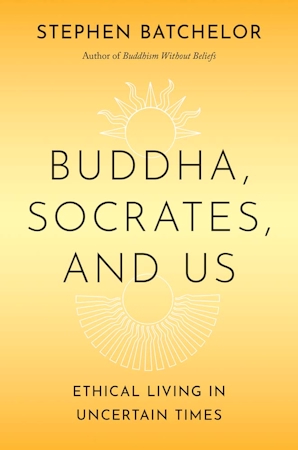At the end of 2024 Stephen retired from teaching courses at Bodhi College and elsewhere in order to concentrate on his writing and art projects at home in France. He will continue to give occasional online and in person talks at conferences and other venues. He is also available to be interviewed on podcasts.
What if Buddhists Ran the World. A conversation between Stephen Batchelor and Bing Song, director of the Berggruen Institute in Beijing, recorded in Venice in November 2024. You can watch this hour long programme HERE.

Stephen’s new book Buddha, Socrates and Us: Ethical Living in Uncertain Times (Yale University Press) is now printed and will be released on August 26. It will be available as a hardcover book, an e-book, as well as an audio book, recently recorded by the author. Stephen will be visiting the United States in September to promote it. So far this will include an in-person book launch hosted by Tricycle magazine in New York on September 11th, and a public talk at the New School for Social Research, New York, on September 12th. Podcasts and other online events are also being planned. For more information on and advance orders for the book visit this page. Details of the book tour will follow.